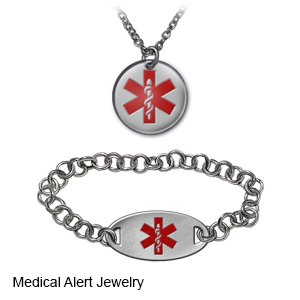Immune Thrombocytopenia in Children
Medically reviewed by Drugs.com. Last updated on Aug 4, 2025.
Immune thrombocytopenia is a bleeding disorder. Immune thrombocytopenia may happen when your child's immune system attacks and destroys his or her platelets. This causes low platelet levels. Platelets are cells that help the blood clot and stop bleeding. When platelet levels are low, bleeding may occur anywhere in the body. Immune thrombocytopenia may also be called idiopathic thrombocytopenia or ITP. Most ITP in children will get better in a few weeks to months. Medicines may be needed to treat ITP, or it may get better on its own. ITP in children can last for several months to years and can become a chronic condition.
DISCHARGE INSTRUCTIONS:
Call your local emergency number (911 in the US) if:
- Your child falls and hits his or her head.
- Your child has a seizure.
- Your child cannot be woken.
- Your child has trouble breathing.
Return to the emergency department if:
- Your child has a sudden, severe headache.
- Your child is confused or has problems seeing, talking, or hearing.
- Your child vomits repeatedly.
- Your baby has a bulging soft spot (fontanel) on his or her head.
- Your child has sudden weakness, numbness, or problems with his or her balance and movement.
- Your child's bleeding does not stop or becomes heavier.
- Your child's arm or leg looks bigger, feels warm, and is painful.
Call your child's doctor or hematologist if:
- Your child has a fever.
- Your child is bleeding from his or her gums, mouth, or nose.
- Your child has abdominal pain.
- Your child has blood in his or her urine or bowel movement.
- You see new bruises or small red or purple spots on your child's skin.
- You have questions or concerns about your child's condition or care.
Related medications
Treatment options
The following list of medications are related to or used in the treatment of this condition.
Medicines:
- Medicines may be given to prevent your child's immune system from destroying platelets. Medicine may also be given to help increase platelet levels and prevent bleeding. Medicines may be given as a pill or through an IV.
- Give your child's medicine as directed. Contact your child's healthcare provider if you think the medicine is not working as expected. Tell the provider if your child is allergic to any medicine. Keep a current list of the medicines, vitamins, and herbs your child takes. Include the amounts, and when, how, and why they are taken. Bring the list or the medicines in their containers to follow-up visits. Carry your child's medicine list with you in case of an emergency.
Help your child prevent or manage bleeding:
- Care for cuts, scrapes, or nosebleeds. Examine your child's skin for minor bumps, scrapes, and cuts. These injuries can increase your child's risk for bleeding that can become life-threatening. Apply firm, steady, pressure to cuts or scrapes. Use gauze or a clean towel. If possible, elevate the body part above the level of your child's heart. If your child's nose bleeds, pinch the top of his or her nose until bleeding stops.
- Be careful with skin and mouth care. Use a soft washcloth when you bathe your younger child. Use a soft toothbrush to keep his or her gums from bleeding. Use lip balm to prevent his or her lips from cracking. Apply lotion to dry skin. Keep your child's nails trimmed. Teach your older child how to care for his or her skin and mouth. If your adolescent shaves his face, have him use an electric shaver.
- Teach your child not to strain when he or she has a bowel movement. The strain can increase pressure in your child's brain and cause bleeding. Ask your child's healthcare provider about a stool softener or laxative to prevent or treat constipation. Do not use enemas or suppositories.
- Use a cool mist humidifier to increase moisture in your home. Moisture may help prevent coughing or nosebleeds. Coughing can increase pressure in your child's brain and could cause bleeding.
- Have your child avoid activities that may cause scratches or bruises. He or she may not be able to play contact sports such as football, hockey, or wrestling. Ask your child's healthcare provider which activities are safe for him or her.
- Do not give your child aspirin or NSAIDs. These medicines can cause your child to bleed and bruise more easily.
Medical alert identification:
Have your child wear jewelry or carry a card that says he or she has immune thrombocytopenia. Ask your child's healthcare provider where to get these items.
 |
Follow up with your child's doctor or hematologist as directed:
Your child will need to return for blood tests to monitor his or her platelet levels. He or she may also need other tests. Write down your questions so you remember to ask them during your visits.
© Copyright Merative 2025 Information is for End User's use only and may not be sold, redistributed or otherwise used for commercial purposes.
The above information is an educational aid only. It is not intended as medical advice for individual conditions or treatments. Talk to your doctor, nurse or pharmacist before following any medical regimen to see if it is safe and effective for you.
Learn more about Immune Thrombocytopenia
Treatment options
Care guides
- Heparin-Induced Thrombocytopenia
- Immune Thrombocytopenia
- Immune Thrombocytopenia in Children
- Purpura
- Thrombocytopenia
- Thrombotic Thrombocytopenic Purpura
Symptoms and treatments
Further information
Always consult your healthcare provider to ensure the information displayed on this page applies to your personal circumstances.
